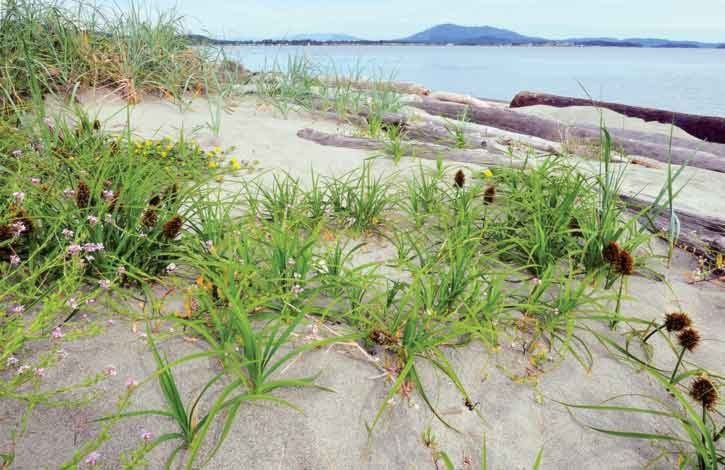For the first time, flames will lick at a 12-foot stand of razor sharp gorse this month on James Island in the name of conservancy.
“This is an effective, cheap way of getting rid of a really nasty stand of gorse,” said Tim Ennis, director of land stewardship for B.C. Region of the National Conservancy of Canada.
With no natural predator for the plant, gorse roams unchecked and takes over. On James Island, the offending plant has taken over a 12-foot high stand of two to three acres.
“It’s out of balance,” Ennis said. “One of the problems is it’s covered in thorns, razor sharp from top to bottom, so trying to get rid of it by hand is really hard.”
It’s sucking up land that should be a good habitat for a number of endangered species.
“It’s taken over some important sand dune habitat,” Ennis said. “If we don’t get rid of this gorse it will continue to spread.”
So one day between now and March 30 – with an eye to the weather for safety and smoke’s sake – they’ll head out to the private island east of the Saanich Peninsula and set fire to the offending plant over two acres in a prescribed burn on Village Spit.
“No one’s really tried it before with this particular situation,” Ennis said. Fire is commonly used to manage landscape, often to restore more open forests – a plan the national conservancy has for the Garry oak forests in Greater Victoria. Those require a burn regime. This would hopefully be a one-time deal.
“No one has really set fire to a big gorse stand before … at least not around here, so we’ll be very interested to see how it goes,” he said.
The gorse appears to be flammable and they expect good results, which is good news for the Edwards’ beach moth, yellow sand verbena (plant) and contorted pod evening primrose.
“Those three are nationally endangered,” Ennis said. Another resident is the sand verbena moth which is also considered an endangered species.
This sand dune-spit ecosystem provides habitat for several federally endangered species of plants and animals that require open sand habitats.
“We want maximum combustion,” Ennis said. “Ideally there won’t be very much left. In fact what we’re looking for is open sand habitat; sand that can be moved and shifted by the wind. It should be an active, dynamic coastal sandspit process that happens out there.”
Replenishing the stocks
James Island maintains some of the last remaining coastal sand dune habitat in the Pacific Northwest and is one of only a handful of known locations of the nationally endangered sand verbena moth, among other species.
The privately owned island provides for a conservation area with no access to the public. That means the ecosystem doesn’t bear the brunt of dogs and walkers like the Sidney Spit or Island View Beach dunes.
“The populations that we have out there are a little bit more robust,” said Tim Ennis, director of land stewardship for B.C. Region of the National Conservancy of Canada.
“If we can make that best place as good as possible … it’ll be a really good thing, but also we will be able to help out with restoration in these other areas.”
Timeline
• 2007: NCC protected 20 per cent of the privately owned island in co-operation with the owner by placing conservation covenants on the most ecologically sensitive portions of the island.
• Now: Since then, they’ve done an ecological inventory, mapped the broom and gorse, and created volunteer work parties to hand pull the smaller stands of invasive plants.
• Ongoing: Beach cleanup parties have kept the trash to a minimum.



